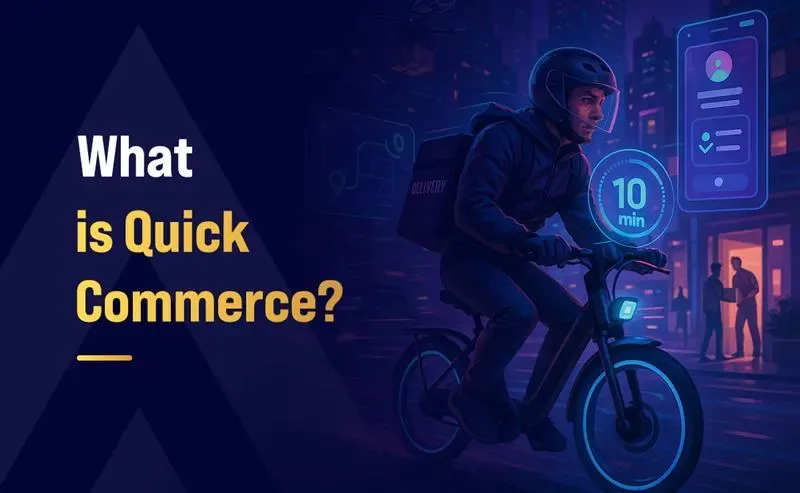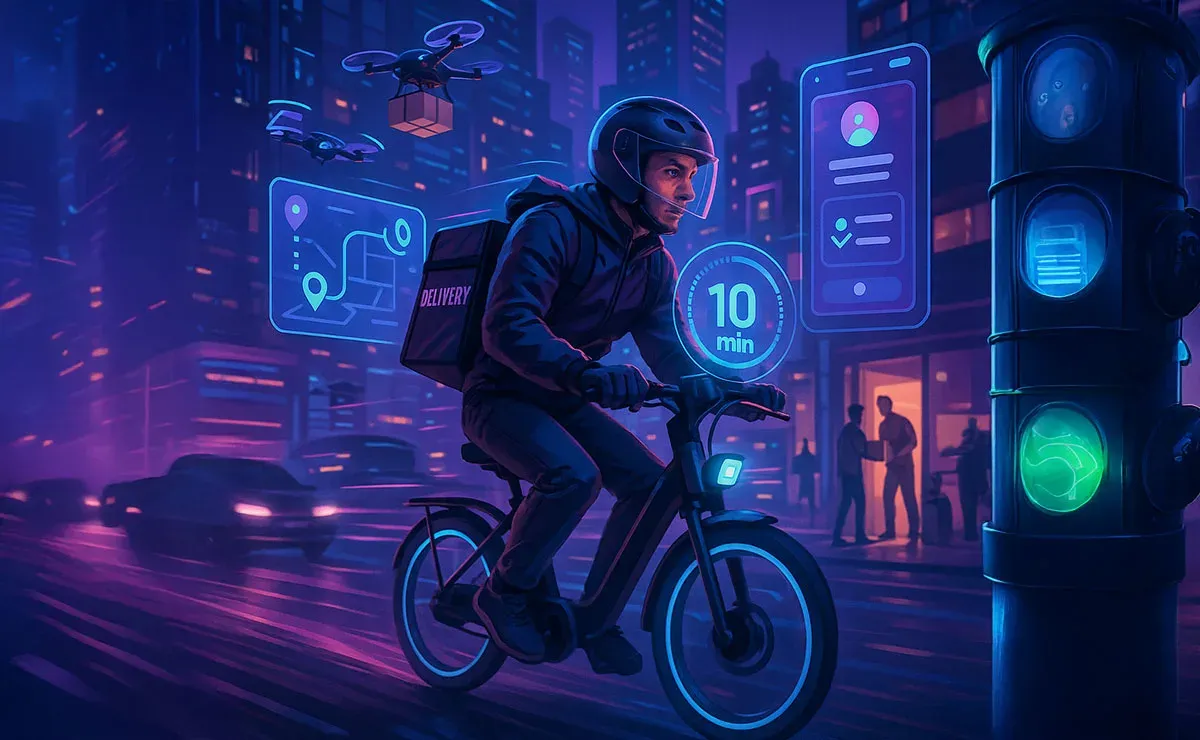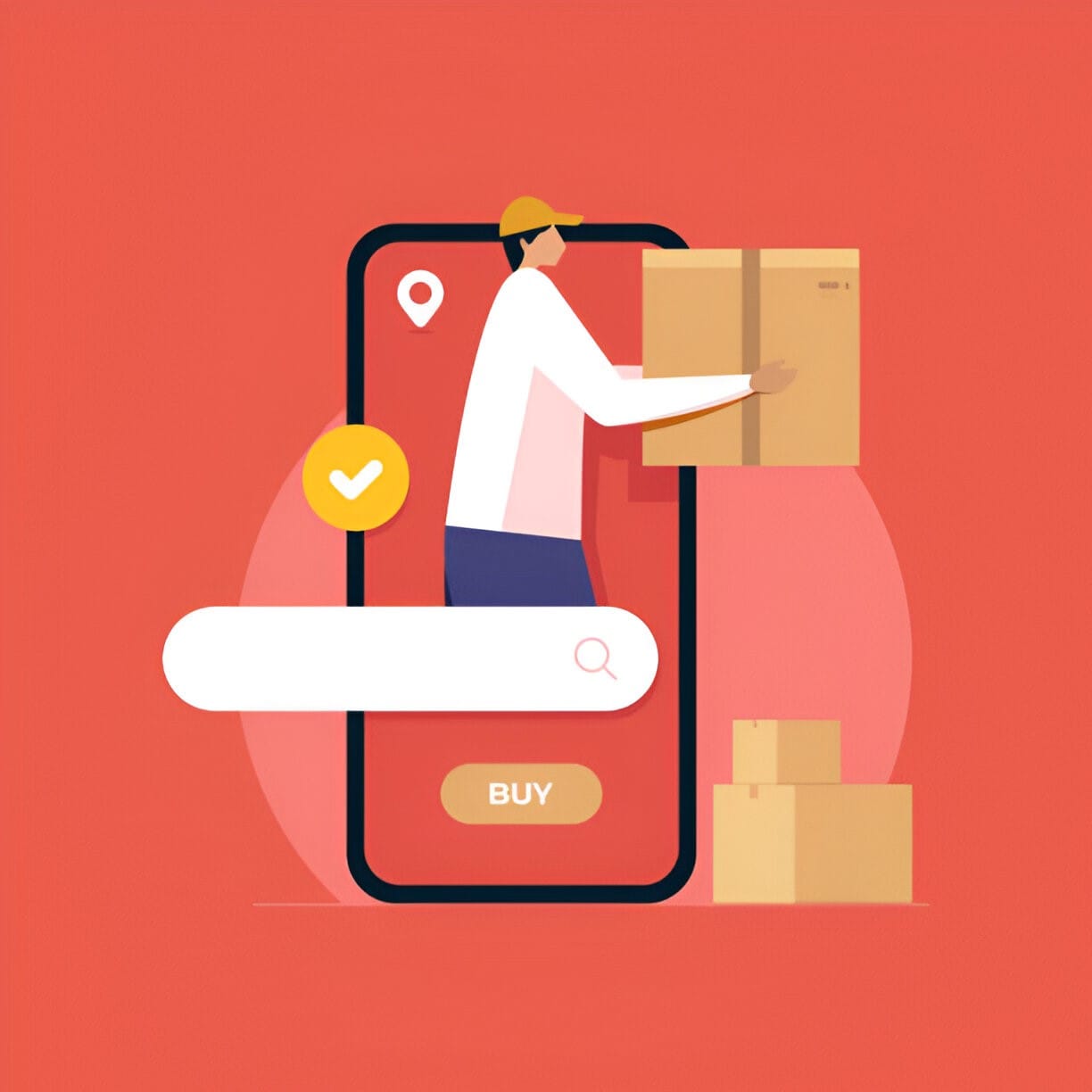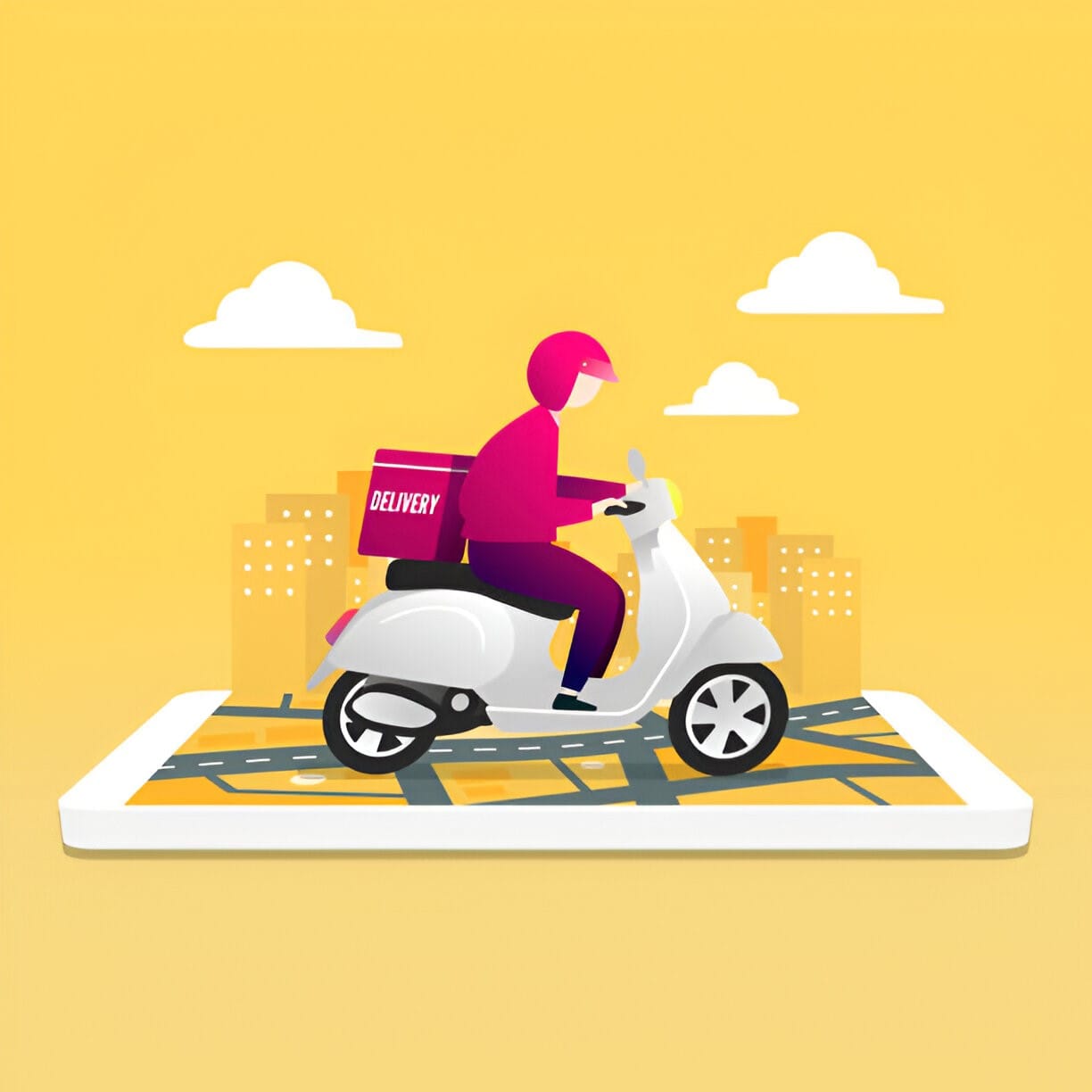What is Quick Commerce?

From "Kirana" to doorsteps in a minute, quick commerce (Q-commerce) is pushing the concept of convenience to new heights. The desire for immediate satisfaction among Indian consumers has been a driving force behind the swift expansion of this industry.
Illustrating this growth, the Economic Times states that quick commerce will expand into new categories in 2025, achieving 75% YoY growth. Consumer goods companies have recognized quick commerce as the retail channel with the fastest growth rate.
In this article we will explore the rise and relevance of Q-commerce landscape in the country while also understanding the factors influencing its growing dominance.
What is Quick Commerce?

The quick commerce business model is a subset of e-commerce, which focuses on the delivery of essential goods like groceries, personal care products, and other daily necessities at unprecedented speed.
Unlike traditional e-commerce, which operates on a standard delivery window of a few days, Q-commerce leverages hyper-local fulfillment networks, technology, and optimized logistics to offer almost instant deliveries.
A Q-commerce business focuses heavily on the below-mentioned features:
- Speed: As established, Q-commerce businesses are known for their speed, delivering essentials to your doorsteps, ideally in less than 10 minutes.
- Products: It focuses on a multitude of stock-keeping unit (SKU) categories of easy-to-deliver essentials like groceries, personal care items, medicines, or ready-to-eat meals.
- Logistics: Q-commerce achieves its speed through strategically located dark stores or warehouses to facilitate timely order fulfillment that is feasible within a certain geographical location.
- Technology: Q-commerce businesses heavily rely on technology to facilitate real-time order processing, inventory management, delivery tracking, and quick turnarounds across the value chain.
Major Q-Commerce Players in the Market
A few years ago, the quick commerce sector was crowded with over 10 active players, leading to a phase of cash burning. However, contrary to expectations, several well-funded players exited early due to funding challenges, a lack of product-market fit, hyperlocal complexities, weak brand recall, and much more.
It transformed the competitive, diverse market into an oligopoly, where the last four remaining main players were exerting significant dominance. This consolidation has enabled the survivor to refine their technology, increase average order value (AOV), create new revenue streams, optimize the supply chain, and reduce last-mile delivery costs.
The four main platforms dominating the market right now are Blinkit, Instamart, Zepto, and Bigbasket Now.
Blinkit
Basic public disclosures, media reports, and industry leader discussions all point to Zomato-owned Blinkit being one of the dominant players in India's Q-commerce space. As of December 31, Blinkit reported a total of 1,007 dark stores, focusing on key metropolitan markets like Bengaluru, Mumbai, and Hyderabad.
The platform has shown significant growth, increasing monthly transacting users from 18.8 million to 20.5 million. Its average order value (AOV) has risen to Rs 707, with deliveries typically completed within 10-30 minutes.
Zepto
Zepto has distinguished itself through rapid innovation and aggressive expansion. Currently operating around 700-750 dark stores, the company aims to increase this to 1,200 by March 2025.
The platform processes approximately 900,000 orders daily, with an average order value of Rs 540-550. Zepto is particularly noted for its ability to deliver groceries in under 10 minutes and maintains an impressive inventory of over 14,000 SKUs.
Instamart
As an integral part of the Swiggy ecosystem, Instamart contributes 40% of Swiggy's consolidated revenue. However, Instamart's average order value of Rs 499 appears modest when benchmarked against competitive platforms like Blinkit and Zepto.
The strategic roadmap for Swiggy involves expanding its quick commerce infrastructure from 609 to 1,046 dark stores by March 2025, with plans to enhance store dimensions to accommodate a broader product spectrum within a 10–20 minute delivery window. The platform offers a diverse product range with over 12,000 SKUs and processes between 800,000 to 1 million daily orders.
Bigbasket (BB) Now
Backed by Tata Digital, BB Now has strategically pivoted to quick commerce completely. Operating 400-450 dark stores across 40 cities, the platform offers approximately 10,000 SKUs.
BB Now boasts an impressive average order value surpassing Rs 700, outperforming Swiggy and Zomato's metrics. It specially focusses on delivering diverse product categories including farm-fresh produce, premium dairy items, and comprehensive household essentials within an ultra-rapid 10-minute timeframe.
The Benefits of Quick Commerce

The emphasis of Q-commerce on ultra-fast delivery and technological innovation offers substantial benefits for both customers and businesses. Here are the key advantages of this revolutionary model:
Swift Delivery
At the core of Q-commerce is its unparalleled speed. Unlike traditional eCommerce platforms, which often take days to deliver, Q-commerce promises delivery times as short as 10 to 30 minutes. This rapid fulfillment caters to the needs of modern consumers who demand instant access to daily essentials, enhancing their overall shopping experience.
Competitive Advantage
Quick commerce provides businesses with a unique selling proposition (USP) that helps them stand out in a competitive market. Consumers who prioritize quick deliveries are more inclined to explore new products or services. By offering convenience and speed, businesses can attract and retain a larger customer base, gaining an edge over traditional eCommerce platforms.
Increased Profit Margins
Quick commerce not only satisfies customers but also boosts business profitability. Companies can leverage the willingness of customers to pay a premium for expedited deliveries, increasing revenue per transaction. Additionally, by focusing on small, high-margin product categories, businesses can maximize profits while maintaining efficiency.
Lower Logistics Costs
Local warehouses or dark stores strategically placed in high-demand areas help Q-commerce companies minimize logistics costs. These localized hubs reduce the need for extensive transportation, making deliveries faster and more cost-effective. Cost reductions from streamlined logistics can be redirected into enhancing other business operations or passed along to customers.
Responsiveness to Shifting Consumer Preferences
Q-commerce leverages data analytics to track and respond to evolving consumer preferences, enabling businesses to optimize stock, tailor their offerings, and improve supply chain operations. The ability to rapidly interpret and respond to consumer preferences serves as a critical determinant of sustained market relevance and competitive success.
Sustainable Practices
As sustainability becomes a global priority, Q-commerce companies are incorporating eco-friendly practices like using electric vehicles for deliveries and recyclable packaging. Implementing sustainable practices not only minimizes ecological footprints but also strategically positions brands to attract environmentally conscious consumer segments, thereby enhancing overall brand perception and market reputation.
How to Implement Quick Commerce?

Establishing a Q-commerce operation involves strategic planning and the integration of innovative solutions. Here’s a comprehensive guide to effectively implementing Q-commerce:
Develop a Network of Local Fulfillment Hubs
To ensure rapid delivery, businesses must establish hyper-local warehouses or micro-fulfillment centers close to target customer areas. These hubs reduce transit times and improve reliability. Selecting inventory that is easy to pack and dispatch further streamlines the process, allowing businesses to meet the promise of lightning-fast delivery.
Diversify Product Offerings
Diversifying the products available for quick delivery is key to success. As consumer preferences evolve, businesses can adapt by incorporating categories, such as health and wellness items, ready-to-eat meals, or premium brands. A wide-ranging product selection ensures businesses stay competitive and address the varying needs of their customers.
Leverage Advanced Software Solutions and Predictive Analytics
Q-commerce management requires robust technological support and software systems. Predictive analytics can help forecast demand patterns, manage inventory levels, and allocate resources efficiently. Real-time monitoring ensures businesses can adapt quickly to dynamic market conditions, minimizing delays and enhancing customer satisfaction.
Prioritize the Customer Experience
Delivering exceptional customer service is at the core of Q-commerce. This includes offering user-friendly platforms for seamless order placement, ensuring accurate and timely deliveries, and maintaining transparent communication throughout the process. Building trust with customers fosters loyalty and strengthens brand reputation.
Q-commerce Trends and Future Growth
Q-commerce trends tend to leverage major event days like the Cricket World Cup Final, New Year’s Eve, and Valentine’s Day to boost sales. Competing platforms ensure that relevant products marketed with such events, for example, chocolates and roses, are readily available during Valentine's Day.
Q-commerce has evolved from focusing on groceries to include more retail categories such as cosmetic products, electronics, home design, wellness items, and other general stuff. This enables D2C brands to view Q-commerce platforms as valuable channel partners, improving their ability to drive sales.
Q-commerce primarily competes with unorganized retail sectors, which increases its chances of success by capturing market share from traditional channels. The industry is expected to grow at a compound annual growth rate of 48%. Tier 2 and Tier 3 cities are the next big growth markets, offering untapped opportunities and indicating significant potential for expansion.
FAQs
Q1. Is Zomato a quick commerce?
Ans: Zomato is primarily a food delivery platform, but it has ventured into quick commerce by acquiring Blinkit (formerly Grofers) in 2022. Through Blinkit, Zomato now offers ultra-fast delivery of groceries, household essentials, and other products, making it a top player in the quick commerce space.
Q2. What is the difference between e-commerce and quick commerce?
Ans: E-commerce refers to the broader concept of buying and selling goods or services online, typically with delivery times ranging from a few days to a week.
In contrast, quick commerce (Q-commerce) focuses on ultra-fast delivery, usually within 10 to 30 minutes, catering to immediate customer needs for small-sized orders like groceries, snacks, or personal care items. The key distinction lies in the speed of delivery and the localized nature of Q-commerce operations.
Summing Up
Quick commerce is revolutionizing the retail landscape by merging speed, convenience, and technology to meet the evolving demands of modern consumers. Its ability to deliver essentials within minutes has set new benchmarks for customer expectations and transformed how businesses operate.
With major players like Blinkit, Zepto, Instamart, and Bigbasket Now leading the way, Q-commerce is poised for exponential growth, especially in Tier 2 and Tier 3 cities. This is driven by sustainable practices and room for significant innovation and profitability.
The rise of Q-commerce emphasizes the need for agility in a rapidly evolving market. Companies that integrate advanced technology, streamline logistics, and focus on customer-centric approaches will be in a strong position to succeed in this competitive and rapidly growing industry.





